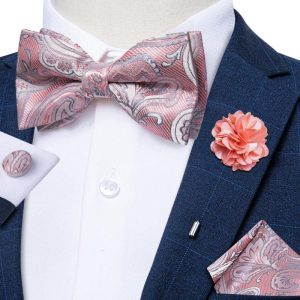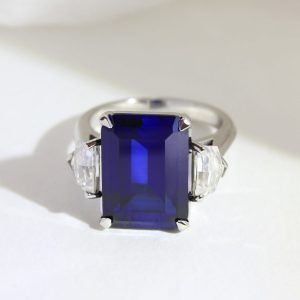10 Global Hairstyles for Kinky Curly Hair: From Africa to the Americas

Kinky curly hair, with its unique texture and volume, is celebrated worldwide. Different cultures have embraced this hair type, creating a rich tapestry of styles that showcase its beauty and versatility. Here, we explore ten global hairstyles that are perfect for those with kinky curly hair, tracing their origins from Africa to the Americas.
Table of Contents
1. African Bantu Knots
Bantu knots, originating from the Zulu people of Southern Africa, represent a classic and culturally rich hairstyle that is both protective and visually striking. This style is particularly suited for kinky curly hair. The process involves dividing the natural hair into small sections and then twisting or coiling these sections into tight, compact knots. The result is a series of beautiful, symmetrical knots that are not only aesthetically pleasing but also serve to protect the hair.
The beauty of Bantu knots lies in their simplicity and the way they honor African roots. This style is deeply embedded in African cultural traditions, symbolizing the rich heritage and artistic expression of the Zulu people. When worn, Bantu knots are not just a fashion statement but a nod to a profound cultural legacy, making them a significant choice for those seeking to celebrate and connect with African heritage through their hairstyle.
2. Caribbean Cornrows
Cornrows, a traditional and widely recognized Caribbean hairstyle, are renowned for their unique and intricate patterns. This style involves tightly braiding the hair close to the scalp in various designs, which can range from simple straight lines to more complex curved or artistic patterns. Beyond their visual appeal, cornrows are practical, effectively containing the hair in a neat and orderly fashion.
This braiding technique serves as a protective style, shielding the hair from environmental elements and reducing daily wear and tear. Cornrows are not just a hairstyle but a cultural emblem, reflecting the rich traditions and artistic creativity of the Caribbean region. They offer a perfect blend of practicality, beauty, and cultural expression.
3. Brazilian Twist Outs
Popular in Brazil, twist outs involve twisting sections of damp or moisturized hair and then unraveling them once dry. This technique defines and enhances the natural curl pattern, creating a voluminous and textured look typical of Brazilian hair aesthetics.
4. American Afro
The Afro, a hairstyle deeply emblematic of African American culture, is a powerful celebration of natural kinky curly hair. This style, characterized by its radiant, voluminous crown of hair, stands as a bold symbol of black pride and cultural identity. It gained particular prominence during the Civil Rights Movement in the United States, where it was not just a fashion statement but a potent symbol of resistance and empowerment. The Afro allows the natural texture of kinky curly hair to be proudly displayed, challenging conventional beauty standards and embracing a more authentic representation of African American heritage. Its historical and cultural significance continues to resonate, making the Afro much more than a hairstyle, but a statement of heritage and self-acceptance.
5. Nigerian Threaded Hairstyle
In Nigeria, the traditional art of hair threading is both a protective style and a display of cultural heritage. This technique involves wrapping the hair with thread, which not only stretches the hair but also provides protection. As the hair is encased in thread, it’s shielded from environmental factors and everyday wear and tear. The result is a unique, sculptural hairstyle that not only showcases the skill and creativity inherent in Nigerian hairdressing traditions but also pays homage to the rich cultural history of the region. This method, blending functionality with aesthetic appeal, is a testament to the ingenuity and beauty of Nigerian hair styling practices.
6. Jamaican Dreadlocks
Dreadlocks, often associated with the Rastafarian movement in Jamaica, are formed by allowing the hair to mat into locks over time. This low-maintenance style is deeply connected to spiritual and cultural identity.
7. South African Braided Updos
In South Africa, braided updos are a popular way to style kinky curly hair. Intricate braids are styled into elegant updos, suitable for both everyday wear and special occasions, reflecting the region’s rich hairstyling traditions.
8. Colombian Pelo Afro Styles
In Colombia, ‘Pelo Afro’ styles celebrate Afro-Colombian heritage. These include a variety of looks from natural curls left free-flowing to intricate braided designs, showcasing the versatility and beauty of kinky curly hair.
9. Ethiopian Halo Braids
Halo braids, a style commonly seen in Ethiopia, involve braiding the hair in a crown-like formation around the head. This regal and elegant style is often adorned with accessories for a more festive look.
10. Afro-Cuban Twisted Bantu
The Twisted Bantu style in Cuba is an inventive fusion of Afro and Cuban hair traditions. This hairstyle involves creating Bantu knots, a traditional African style, and incorporating additional twists, reflecting the unique cultural blend in Cuban society. In this style, hair is first twisted before being coiled into the classic Bantu knots, adding an extra dimension of texture and complexity. This method not only adds to the visual appeal of the knots but also showcases the diverse cultural influences that shape Cuban society. The Twisted Bantu style is a celebration of this cultural diversity, merging traditional African hairstyling techniques with Cuban flair to create a distinct and culturally rich hairstyle.
Each of these hairstyles is not just a way to manage kinky curly hair but also a reflection of the rich cultural histories and identities they represent. From the vibrant streets of Rio de Janeiro to the bustling markets of Lagos, these styles connect individuals to their heritage and offer a world of creative expression for those with kinky curly hair.






